(Un)solved mysteries
By Alex Branch
In June 2017, Shawn Neill, 42, got on his four-wheeler and rumbled toward the banks of the Ohio River near his Illinois home.
The only son of Rex and Judy Neill loved camping, fishing and hunting for wild mushrooms and arrowheads. He pitched a tent on the riverbank — and vanished.
Law enforcement and hundreds of volunteers scoured the river. Missing posters were printed. A Facebook page launched.
Eighteen months passed.
“Not knowing was horrible,” Judy Neill said. “You lie in bed imagining every terrible possibility.”
Peace finally came when a UNT Health Science Center forensic anthropologist identified Neill’s skeletal remains found on the river in another county. The anthropologist is with the UNT Center for Human Identification (CHI), an elite 70-person team that uses forensic science to solve crimes and mysteries, deter human trafficking and give resolution to crime victims and their families.
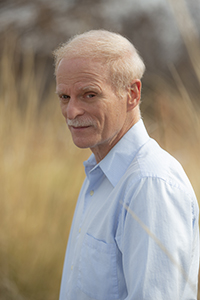
CHI, led by Dr. Bruce Budowle, an internationally known forensic scientist who spent 26 years at the FBI, is recognized as one of the world’s most preeminent forensic laboratories. CHI handles 60 to 70 percent of missing persons in the Combined DNA Index System database (CODIS), the FBI’s program to support the use of DNA in criminal investigations.
John Wayne Gacy. The Green River Killer. The 9/11 attacks. Hurricane Katrina. The Center for Human Identification assisted in identifying victims of each.
“People ask us all the time what’s the biggest case we’ve handled,” Dr. Budowle said. “We answer, ‘All of them.’ Every person we’ve identified had a family, people who loved them. Every person we identify is a big case to us.”
For this, heartbroken families are grateful. When the sheriff knocked on Judy Neill’s door in December 2018 to tell her Shawn was found, she cried tears of sadness and relief.
“The mystery was over,” she said. “I could bury my son.”
‘An exceptional resource’
Ornate coins line display cases in Dr. Budowle’s office at the Health Science Center.
Known as challenge coins, they’re exchanged by law enforcement agencies, government agencies and politicians as tokens of appreciation. Each coin represents a relationship, remains identified, training provided or court testimony.
FBI. U.S. Army Crime Lab. Nashville Police. Homeland Security in Honduras. Dr. Budowle has 500 more coins at home.
“We designed our own coins that the Center for Human Identification exchanges with all the agencies we work with,” Dr. Budowle said. “It’s a way of showing respect and appreciation.”
CHI greatly benefited from the expertise of Dr. Arthur Eisenberg, who Dr. Budowle describes as “a forefather in bringing DNA typing into both paternity testing and the field of forensic genetics.” Dr. Eisenberg died in 2018.
CHI is one of the few laboratories in the United States that performs mitochondrial DNA testing. Found within each cell, mitochondrial DNA is known as the “powerhouse of the cells” and is passed down biologically from mothers to their children.
Mitochondrial DNA has properties that make it valuable in identifying degraded human remains or small amounts of remains. However, only a handful of laboratories test mitochondrial DNA because it is arduous and costly. To overcome some of the technique’s limitations, CHI has been researching and developing novel, advanced DNA-sequencing systems to lead the way in forensic genomics.
The scope of services offered by CHI sets it apart from other laboratories. In addition to its forensic DNA and anthropology capabilities, CHI has since 2011 managed the National Missing and Unidentified Persons System (NamUs), a National Institute of Justice-funded information clearinghouse and resource center for missing persons.
A unit within CHI administers the local CODIS database. An evidence team works with law enforcement in receiving samples for testing and to maintain the chain of custody.
Visitors from around the world come to CHI to learn and collaborate on advanced research endeavors. In November 2019, a team from the Balkans working to identify 11,000 people still missing from 1990s conflicts spent two days at UNTHSC learning how DNA helps solve complex missing-person cases and how to manage databases.
CHI has an innovative research laboratory, and it offers students from the Graduate School for Biomedical Sciences a unique opportunity to learn about cutting-edge forensic genomics, pharmacogenomics, and bioinformatics.
Former U.S. Congressman Dave Reichert, who was King County Sheriff when DNA identified the Green River Killer in Washington, said: “The Center for Human Identification is an exceptional resource for law enforcement agencies, not just in the United States but around the world. I give the university a tremendous amount of credit for committing the resources into building it into the dynamic center it is today.”
Giving victims justice
Lavinia Masters was 13 when a stranger raped her in her Dallas bedroom. But evidence collected from her at the hospital sat on a shelf untested for more than 20 years.
By the time it was tested, too much time had passed to file charges.
To help give crime victims like Masters the justice they deserve, CHI is significantly expanding its laboratory infrastructure to enhance its efforts to reduce the sexual assault kit backlog.
The Texas Legislature, which last year passed the Lavinia Masters Act requiring sexual assault kits to be tested within 90 days of being received, invested $5 million in biennial funding in CHI to support expansion of these services.
“No victim should have to wait months or years to have sexual assault evidence analyzed,” Dr. Budowle said. “If we identify the perpetrator early on, we can prevent this person from committing another sexual assault, thus sparing one, or many, from becoming a victim.”
In Texas, there are an estimated 234,000 victims of human-labor trafficking and 79,000 victims of youth sex trafficking at any time. The Texas Legislature invested $10 million more to support efforts to combat human trafficking and enhance identification of missing persons. CHI has begun a program using virtual reality to train law enforcement, health care providers, students and community members in how to spot signs of human trafficking.
CHI also has implemented a novel humanitarian DNA database to identify smuggled and trafficked victims from Mexico and Central America who die in the U.S. The DNA from human remains found in the U.S. that may be people from countries like Guatemala, Honduras and El Salvador is often not useful for identifying these victims because there are rarely reference samples from relatives in CODIS to make comparisons.
“It’s a project that could make a big difference for the families of these victims and also help law enforcement stop trafficking,” Reichert said.
Genomic medicine
CHI has the expertise to help lead HSC’s transition into genomic medicine, which uses a person’s genetic information to make therapeutic decisions and improve outcomes.
To explain how, Dr. Budowle recalls the death of a 13-day-old child from morphine poisoning. Law enforcement began an investigation of the death as a homicide.
It turned out the mother had an episiotomy and was prescribed codeine for pain. Forensic genetic testing revealed she was an “ultra-rapid metabolizer” of codeine, meaning her body was rapidly metabolizing the codeine into morphine. Up to 10 percent of Caucasians are ultra-rapid metabolizers.
The mom had unknowingly poisoned her baby through breastfeeding.
“This was already a terrible tragedy,” Dr. Budowle said. “But without that genetic testing, the mother or someone else might also have been wrongly treated as a criminal.”
This same science can be applied to genomic medicine. By examining a patient’s genetics, a provider could determine what medication will work best for that specific patient without risking harmful reactions from drugs or prescribing meds that provide no benefit.
“Genomic medicine is an area we are very interested in,” Dr. Budowle said. “We do this work because we want to help people and improve the quality of life. If we can help one person, it is worth it. It is an important part of the HSC culture.”
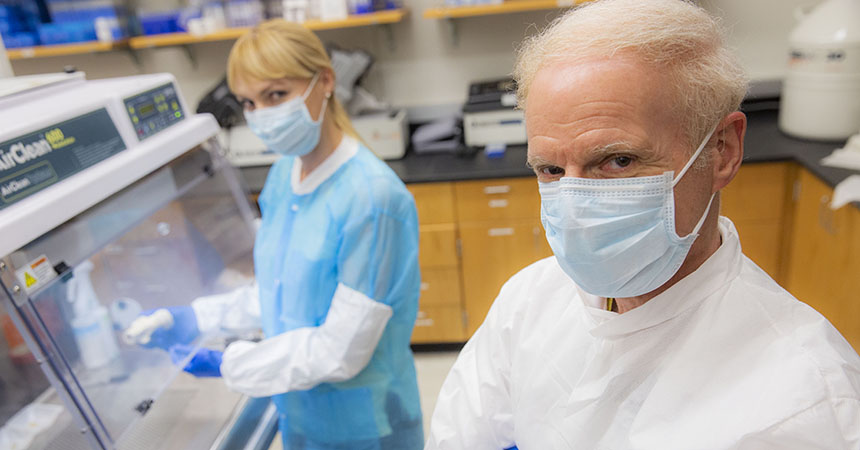
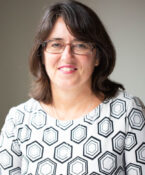
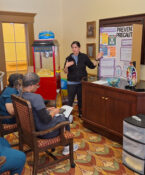
![Uyen Sa Nguyen Scaled[58]](https://www.unthsc.edu/newsroom/wp-content/uploads/sites/16/Uyen-Sa-Nguyen-scaled58-145x175.jpg)
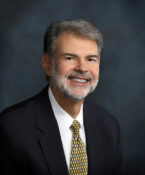

Social media